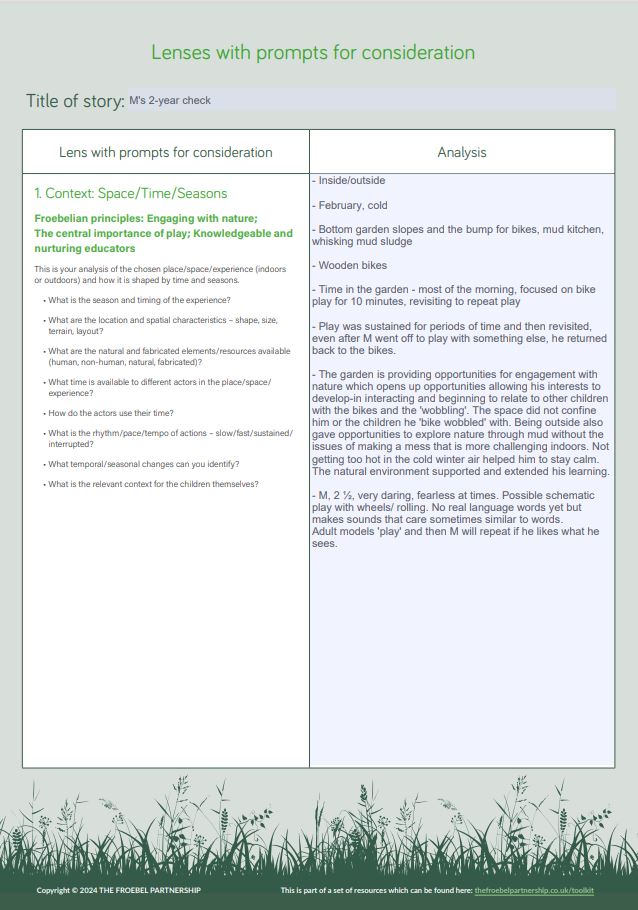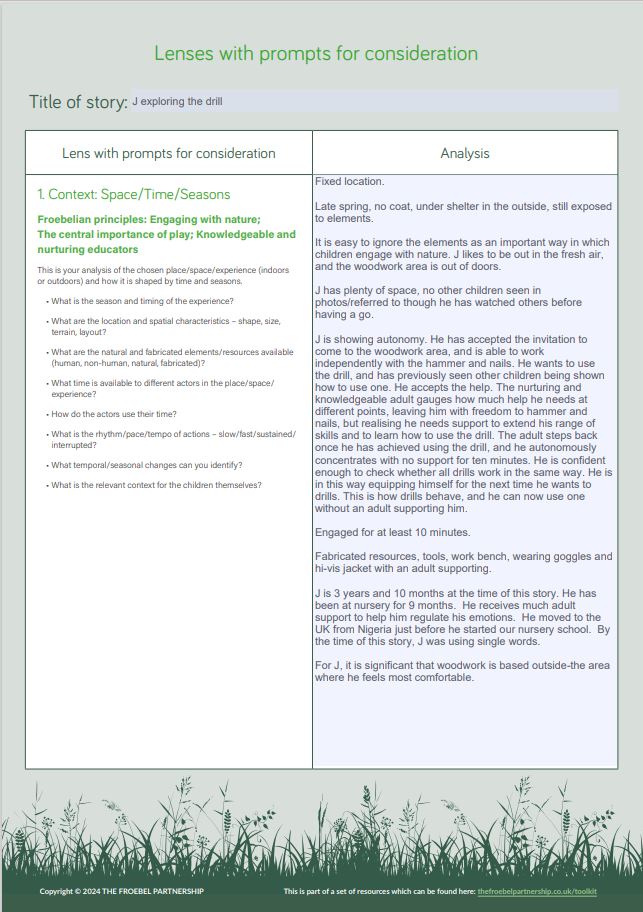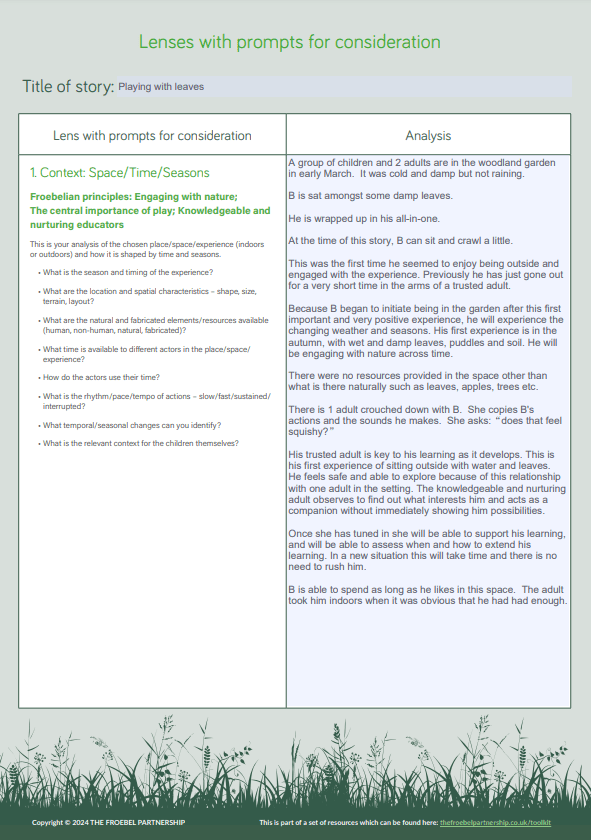The significance of relationships in children’s development, learning and transformations
The examples given below show the different ways the Reflection with Guidance tool can be used.
Some are written stories with accompanying Reflection with Guidance templates completed by a small group of educators.
Others are recordings of educators using the prompts on the Reflection with Guidance tool to discuss a photo or a video or a written narrative observation (learning story).
Other completed Reflection with Guidance templates show how educators have used them to reflect on a video of children or some photos.
“Educators should nurture and support children’s growing potential as autonomous, thinking, feeling, creative learners. Relationships with children should be warm, respectful, interactive and intellectually engaging.”
(Tovey, 2020)
Learning from a puddle
Learning from a puddle
Listen to educators reflecting on M playing in a puddle. Consider the impact of the actions of both the child and the educators on his development and learning.
Child A and the blocks
Child A and the blocks
Listen to a couple of educators reflecting on A and his use of the blocks. Consider the actions of both child and educator and how these help both the educator better understand the child and how they support the child to reflect on his learning and understanding.








